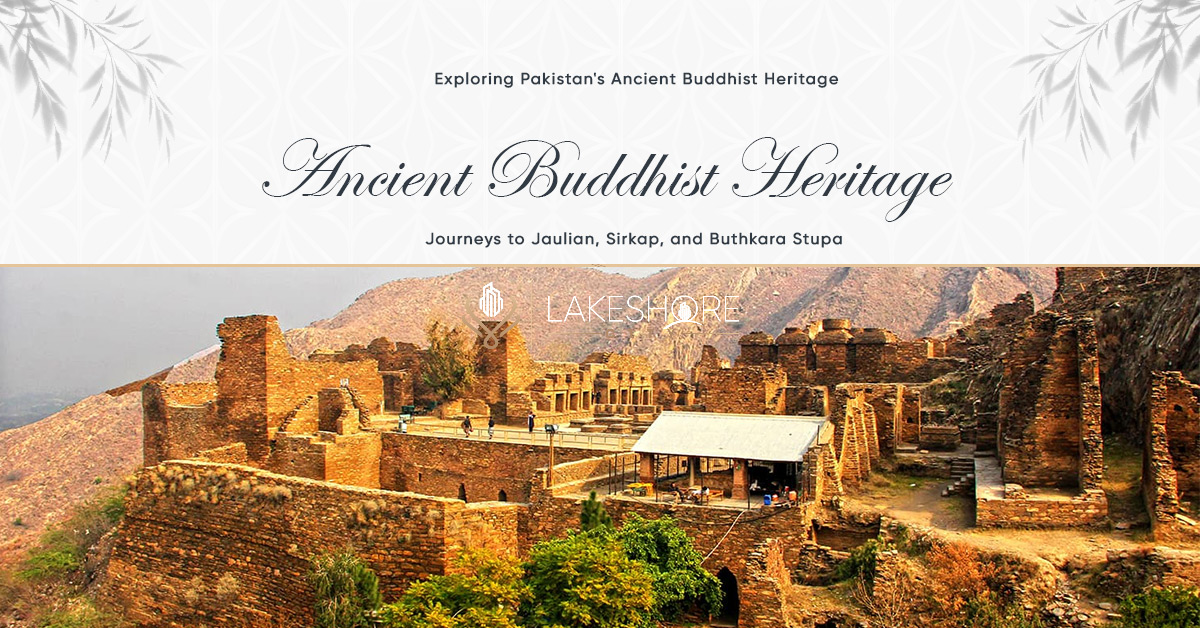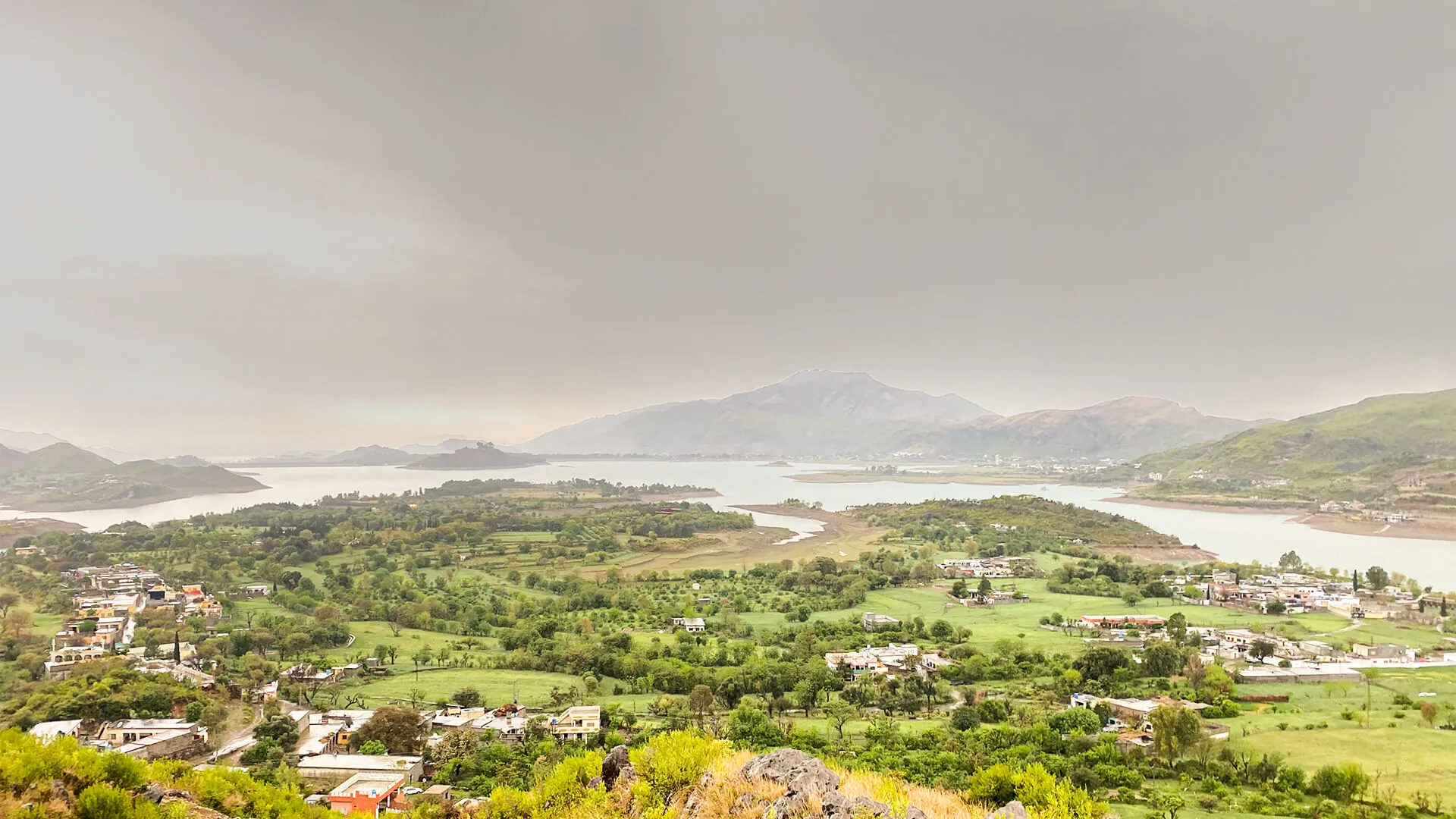Exploring Pakistan’s Ancient Buddhist Heritage: Journeys to Jaulian, Sirkap, and Buthkara Stupa
Introduction
We went to Jaulian, a Buddhist archaeological site in Gandhara, Khyber Pakhtunkhwa, which is not far from Taxila, Punjab, on July 16, 2022. The journey there was completed in under 30 minutes.
We were warmly welcomed by Dr. Abdul Samad, Director of Archaeology and Museums in Khyber Pakhtunkhwa, and the staff of the Department of Archaeology at the Peshawar Museum. We climbed the stony steps to reach the Jaulian ancient site, perched atop a little hill. It was a joy to observe the ruins of the Buddha statues and stupas, whose beauty is commendable of Gandharan ancient art and which have significant spiritual significance to Buddhists worldwide.
Jaulian Khyber Pakhtunkhwa
The latter Kushan dynasty saw the establishment of Jaulian’s Buddhist Heritage. The Jaulian site, which includes ancient viharas and the King Ashoka-era Sanchi stupa, is only a hundred meters above the ground.
The distance between Jaulian and Sirkap, Taxila’s ancient location, is around 10 miles. According to archaeological evidence, Sir John Marshall oversaw the excavation at Jaulian. Three stupa courtyards and three entrances are present. The stupa courtyard sits on a high mound that faces south. The stupa is in a lower square on the northern side. The third courtyard, which connects the first and second courtyards to the west, is smaller than the other two.
The main entrance is in the bottom courtyard, where five stupas once stood, but now their bases are visible. One of the stupas has a V etched and the donor’s name on its base. Buddha and Bodhisattva statues were kept in rows of slender caves or cells on the bottom level of the courtyard.
The statues have now been moved to the Taxila Museum. The upper part contains the main stupa. It’s just the base now. Built during the Kushan period, between the seventh and eighth Buddhist Centuries, it served as a repository for the Buddha’s relics and those of important disciples. The reliefs with decorations could appear later.
The Buddha statue with the hole in his navel is the most remarkable. People who visit the Buddha can place their finger in the hole and make a wish for their protection and freedom from pain, ailment, and catastrophe. Some Kharosthi is writing on the base that reads, “gift of one Budhamitra.” There are also tiny stupas with Buddha relics adorned with priceless stones. There are stairs leading to a tiny, open area with little huts surrounding it on the lower ground level, on the east side of the room, where the monks practice the Dhamma.
The Kushan period (during the 8th and 11th centuries of Buddhism) construction of the ancient monastery at Jaulian resulted in its completion. For additional investigation, it is still clear that the schools, lodgings, and locations for religious activity formerly existed. Plaster was used to create Jaulian sculptures comparable to those discovered in Bhamala in Khyber Pakhtunkhwa, KP.
Sirkap Taxila
I (MV) visited the Sirkap ancient site in Punjab, Pakistan, adjacent to the Taxila Museum. Around the beginning of the second century BC, Bactrian Greeks founded Sirkap. It was a large metropolis that could accommodate a sizable settlement, with a proper town design akin to the Greek grid system. The major road, which divided the city into east and west and stretched from the entrance north to south, was intersected at right angles by minor roads. The Sirkap-Kunala palace was on a small hill on the south side of the historic city.
Residential sections were located behind the community centers, markets, and stores on the west side, many selling gold and jewelry. Buddhist, Jain, Hindu, and Christian worship sites may all be found on the east side. Seeing a mixed culture where people could practice their religion freely was beautiful.
There were priceless statues, dramatic reliefs that told the Buddha’s stories, and buildings plastered over and painted white. Additionally, pillar decrees written in Aramaic and attributed to “Priyadarshi,” a title connected to Ashoka, then the prince and governor of Taxila, were discovered during the excavations in Sirkap. They demonstrated how Kharosthi alphabets had developed from Aramaic letters at a later time.
Over three hundred years passed when the Greeks, Scythians, Parthians, and Kushans all controlled Sirkap. The building’s architectural remnants, which are still in good shape, demonstrate the complex influence of several cultures and historical periods. These include structures that imitate ancient Indian, Greek, and Scythian architecture and the Double Headed Eagle Stupa.
Buthkara Stupa | Swat
Near Mingora, the 2,000-year-old Buthkara stupa is a significant Buddhist landmark in Swat. Gulkada (gool-ka-da), its regional name, is another name. It is typically dated to the second century BCE, though it may have been constructed by the Mauryan emperor Ashoka. The monastery of “Ta-Lo,” mentioned by Sung Yun (520 CE), has been identified as the sacred Buddhist precinct of Buthkara. This monastery is located at the easternmost point of Udyana Meng-Chich-Li, also known as Mingora, the old capital. The Chinese Buddhist pilgrims of the fifth, sixth, and seventh centuries CE traveled there and wrote descriptions of it.
In the center is the main stupa. Other monuments are gathered around it, including columns, stupas, and viharas. A large building can be seen on the northern side, and further north and west is where people live. The central Great Stupa has been reconstructed five times, with each time new buildings covering older ones dating from the third century BCE to the tenth century CE.
One of Swat’s richest artifact harvests came from this location, and everything is currently in museums. Ashoka most likely constructed the massive main stupa in the third century BC, but by the tenth century, it had undergone five reconstructions, each encircling the previous one.
From 1956 onward, the stupa was excavated by an Italian mission under the direction of the archaeologist Domenico Faccenna to shed light on the many stages of its construction and expansion. The expedition proved that the stupa was “monumentalized” from the second century BCE by adding Hellenistic architectural ornamentation.
This indicates that the Indo-Greek monarchs of North-Western India directly influenced the Greco-Buddhist architectural development during that time.
It is also believed that the Barikot Hellenistic fortifications are modern. Since Chandragupta Maurya’s coin was discovered in the oldest core strata, the Ashokan era is the most likely candidate.
The oldest strata, which belongs to the second half of the first century BCE or the first decade of the first century CE, had an Azes II coin, while the second oldest stratum contained a Menander I coin. The Kushan Kujula Kadphises and late Azes II coins were found in the fourth stratum.
Conclusion
In North-Western India, the in-situ Buddha (or Bodhisattva) statue at Buthkara is regarded as one of the earliest—if not the—known iconographic statues of the Buddha. According to Professor JE van Lohuizen-de Leeuw, the statue was found in the third stratum, which also contained an Azes II coin, and it is thought to have been constructed between the late first century BCE and the early first century CE. More cautious estimates place its creation in the first or second century CE, approximately when Mathura produced the earliest Buddha statues. As a result, the development of the Buddha image can be said to have co-occurred in the two different regions.
Frequently Asked Questions (FAQs)
Q1. What are the historical Buddhist sites mentioned in the article?
Ans. The article discusses visits to several Buddhist archaeological sites in Pakistan, including Jaulian in Khyber Pakhtunkhwa, Sirkap in Punjab, and Buthkara Stupa in Swat.
Q2. When were these sites established, and who were the prominent historical figures associated with them?
Ans. Jaulian dates back to the Kushan dynasty, while Bactrian Greeks founded Sirkap around the second century BC. Ashoka, the Mauryan emperor, is linked to some of these sites.
Q3. What is the significance of Jaulian in Gandhara, Khyber Pakhtunkhwa?
Ans. Jaulian is known for its ancient viharas, the King Ashoka-era Sanchi stupa, and its role as a Buddhist heritage site.
Q4. Can you provide insights into the layout and features of Sirkap in Taxila?
Ans. Sirkap had a well-planned layout with residential areas, markets, worship sites for various religions, and remarkable statues and reliefs.
Q5. What is the historical and cultural significance of Sirkap’s pillar decrees mentioned in the article?
Ans. Sirkap’s pillar decrees with Aramaic inscriptions are associated with “Priyadarshi,” a title connected to Ashoka. They highlight the development of Kharosthi alphabets from Aramaic letters.
Q6. Tell us more about the Buthkara Stupa in Swat.
Ans. Buthkara Stupa, or Gulkada, is a 2,000-year-old Buddhist landmark in Swat, possibly built by Ashoka. It houses a central Great Stupa with rich archaeological findings.
Q7. How does Buthkara Stupa contribute to the development of Buddhist iconography?
Ans. Buthkara Stupa is home to one of the earliest-known iconographic statues of the Buddha, offering insights into the evolution of Buddhist imagery.
Q8. What cultures and historical periods influenced the architectural remnants found in Sirkap?
Ans. Sirkap exhibits influences from Greek, Scythian, Parthian, and Kushan cultures, resulting in a diverse architectural landscape.
Q9. Are these historical sites open to the public, and how can visitors access them?
Ans. Yes, many of these sites are open to the public, and visitors can access them by following designated paths and guidelines set by the local authorities.
Q10. How can the preservation and study of these Buddhist heritage sites contribute to our understanding of history and culture?
Ans. The preservation and study of these sites provide valuable insights into the rich history, cultural interactions, and religious practices of ancient civilizations, promoting historical awareness and appreciation.
Our Featured Article:
Read More: Exploring The Buddhist Rain Retreat in Taxila: A Cultural Journey
Don’t miss the chance to invest with Lakeshore! Secure your investment today by investing your financial investment with Lakeshore in the following available options like Lakeshore City, Lakeshore Club, and Lakeshore Farms.
For More updates, please Contact +92 335 7775253 or visit our website https://lakeshorecity.com/
Lakeshore City is the upcoming elite lifestyle at Khanpur Dam. Offering no parallel amenities for the members and owners of distinguished farmhouses.
Become Part of Luxurious Lifestyle
Contact: 0335 7775253



